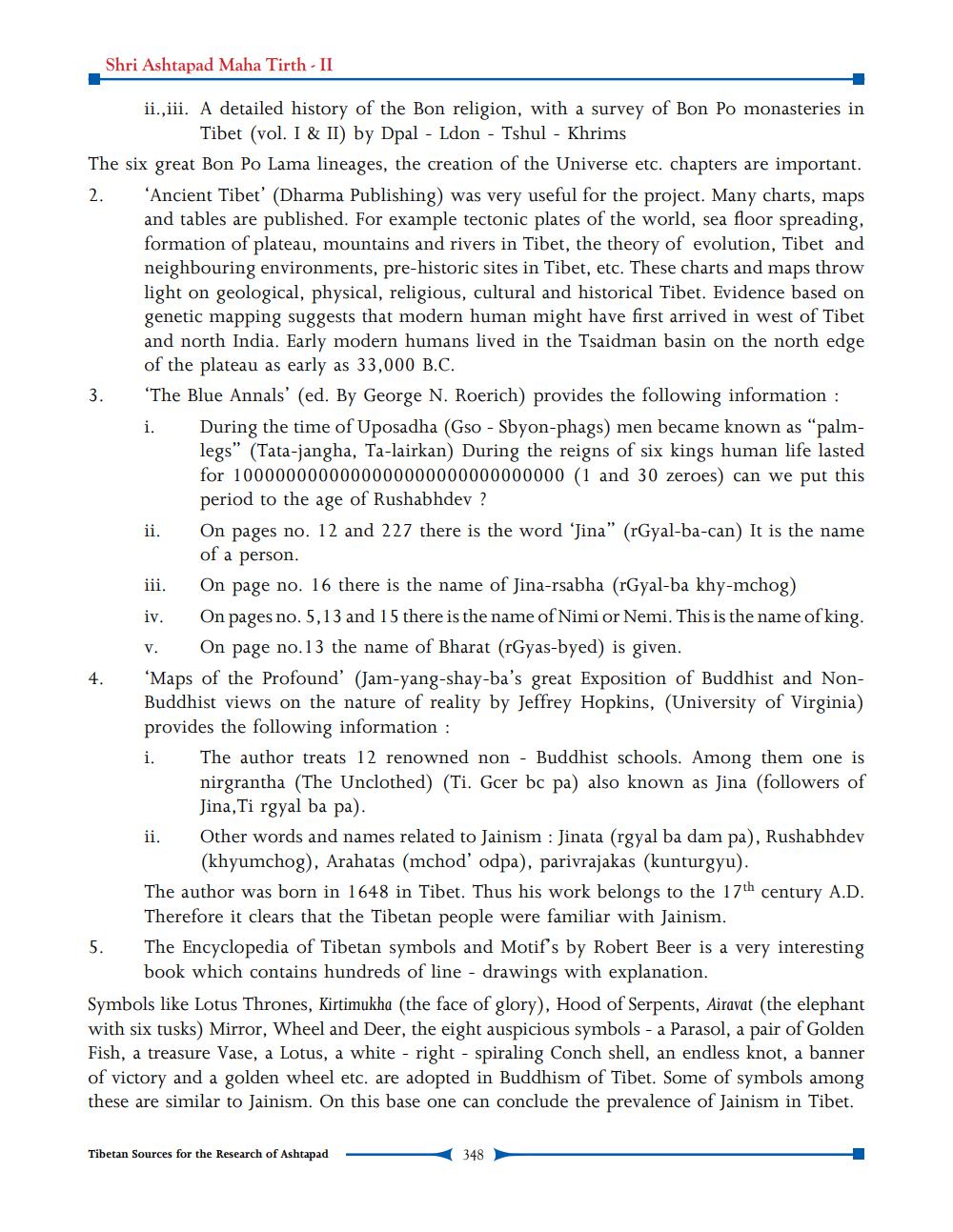________________
Shri Ashtapad Maha Tirth - II
ii. iii. A detailed history of the Bon religion, with a survey of Bon Po monasteries in
Tibet (vol. I & II) by Dpal - Ldon - Tshul - Khrims The six great Bon Po Lama lineages, the creation of the Universe etc. chapters are important. 2. Ancient Tibet' (Dharma Publishing) was very useful for the project. Many charts, maps
and tables are published. For example tectonic plates of the world, sea floor spreading, formation of plateau, mountains and rivers in Tibet, the theory of evolution, Tibet and neighbouring environments, pre-historic sites in Tibet, etc. These charts and maps throw light on geological, physical, religious, cultural and historical Tibet. Evidence based on genetic mapping suggests that modern human might have first arrived in west of Tibet and north India. Early modern humans lived in the Tsaidman basin on the north edge
of the plateau as early as 33,000 B.C. 3. 'The Blue Annals' (ed. By George N. Roerich) provides the following information : i. During the time of Uposadha (Gso - Sbyon-phags) men became known as “palm
legs" (Tata-jangha, Ta-lairkan) During the reigns of six kings human life lasted for 1000000000000000000000000000000 (1 and 30 zeroes) can we put this period to the age of Rushabhdev ? On pages no. 12 and 227 there is the word "Jina" (rGyal-ba-can) It is the name
of a person. iii. On page no. 16 there is the name of Jina-rsabha (rGyal-ba khy-mchog)
On pages no.5,13 and 15 there is the name of Nimi or Nemi. This is the name of king. V. On page no. 13 the name of Bharat (rGyas-byed) is given. 'Maps of the Profound' (Jam-yang-shay-ba's great Exposition of Buddhist and NonBuddhist views on the nature of reality by Jeffrey Hopkins, (University of Virginia) provides the following information: i. The author treats 12 renowned non - Buddhist schools. Among them one is
nirgrantha (The Unclothed) (Ti. Gcer bc pa) also known as Jina (followers of
Jina, Ti rgyal ba pa). ii. Other words and names related to Jainism : Jinata (rgyal ba dam pa), Rushabhdev
(khyumchog), Arahatas (mchod' odpa), parivrajakas (kunturgyu). The author was born in 1648 in Tibet. Thus his work belongs to the 17th century A.D.
Therefore it clears that the Tibetan people were familiar with Jainism. 5. The Encyclopedia of Tibetan symbols and Motif's by Robert Beer is a very interesting
book which contains hundreds of line - drawings with explanation. Symbols like Lotus Thrones, Kirtimukha (the face of glory), Hood of Serpents, Airavat (the elephant with six tusks) Mirror, Wheel and Deer, the eight auspicious symbols - a Parasol, a pair of Golden Fish, a treasure Vase, a Lotus, a white - right - spiraling Conch shell, an endless knot, a banner of victory and a golden wheel etc. are adopted in Buddhism of Tibet. Some of symbols among these are similar to Jainism. On this base one can conclude the prevalence of Jainism in Tibet.
4.
Tibetan Sources for the Research of Ashtapad
348




